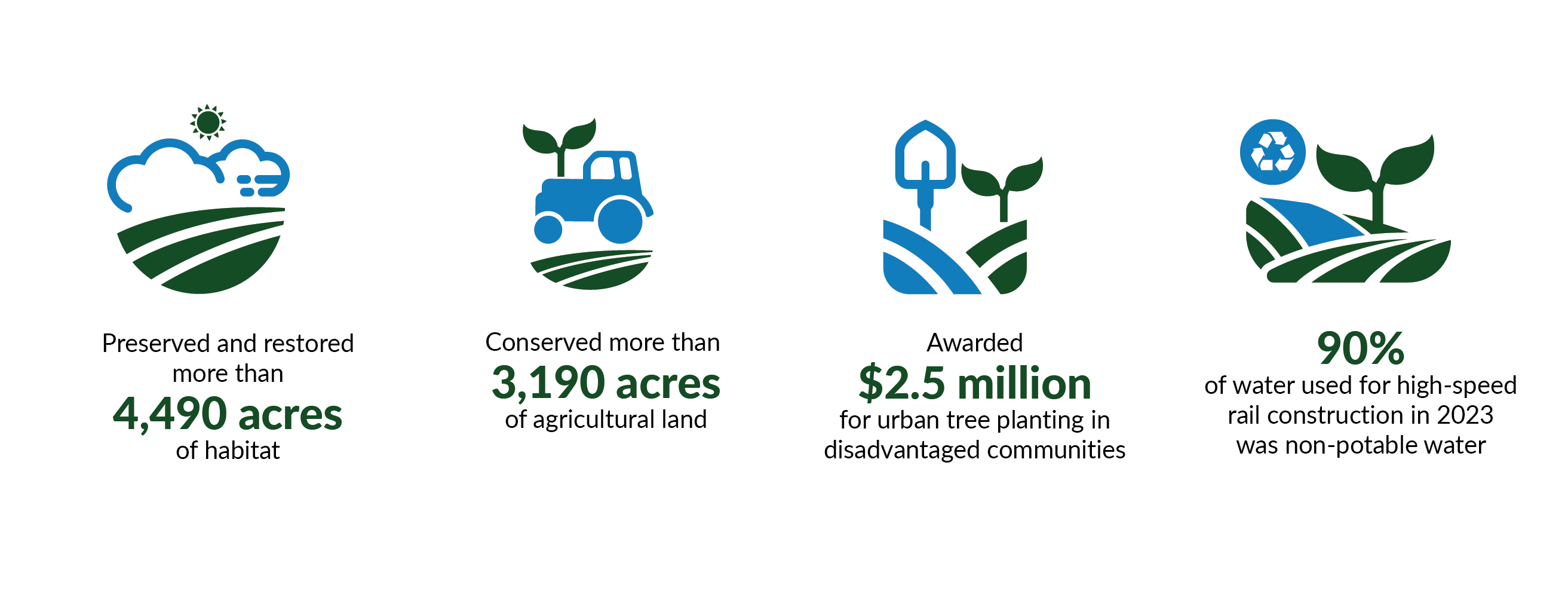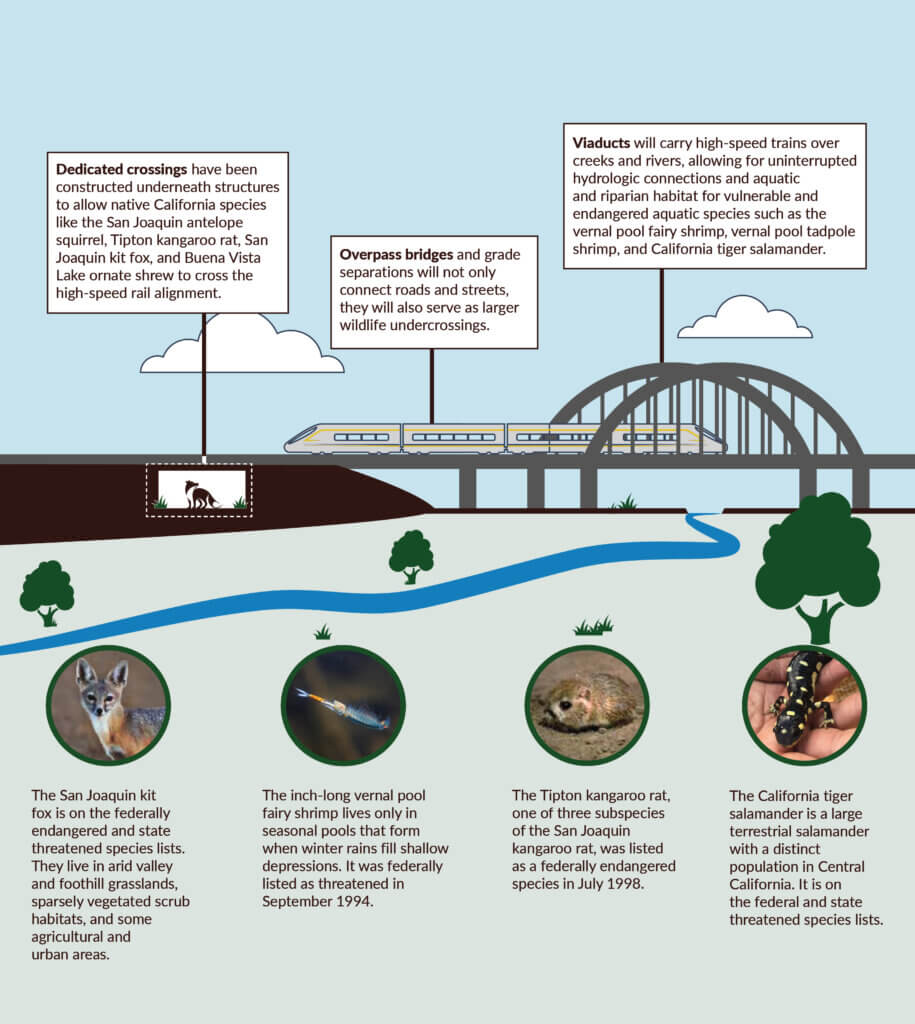 Điểm nổi bật từ Chương 5:
Điểm nổi bật từ Chương 5:
Tài nguyên thiên nhiên
- Cam kết về Tài nguyên thiên nhiên: Cơ quan Đường sắt Cao tốc California ưu tiên bảo vệ các hệ thống và cảnh quan thiên nhiên độc đáo của California. Mục tiêu của chúng tôi là xây dựng một hệ thống đường sắt cao tốc với tác động tối thiểu đến môi trường.
- Cơ sở hạ tầng thân thiện với động vật: Dự án kết hợp hành lang động vật hoang dã vào thiết kế kết cấu, bảo tồn đa dạng sinh học bằng cách cho phép động vật băng qua an toàn dưới đường ray xe lửa. Chúng tôi đã xây dựng hơn 250 lối đi dành cho động vật hoang dã ngoài các cây cầu, cầu vượt và cầu cạn cho phép động vật hoang dã đi qua dưới và qua đường ray của chúng tôi. Chúng tôi cũng kết hợp các yếu tố thiết kế để giúp các loài chim lớn hơn đậu an toàn.
- Bảo tồn môi trường sống: Các dự án quy mô lớn đang được tiến hành để bảo vệ và phục hồi môi trường sống tự nhiên bị ảnh hưởng bởi việc xây dựng đường sắt cao tốc. Cơ quan đã phục hồi hơn 4.400 mẫu Anh đất bị thoái hóa, bao gồm 151 mẫu Anh đất ngập nước.
- Bảo tồn nông nghiệp: Chúng tôi đã bảo vệ 3.190 mẫu Anh đất nông nghiệp. Dựa trên ước tính năm 2023, 1.654 mẫu Anh sẽ phải chịu rủi ro phát triển. Kể từ năm 2019, lượng khí thải tích lũy tránh được từ các quyền phát triển bị xóa bỏ từ các quyền hạn nông nghiệp là 348.700 MTCO2e.
- Bảo tồn nước: Cơ quan thực hiện các biện pháp tiết kiệm nước trong quá trình xây dựng và vận hành. Lượng nước sử dụng cho xây dựng của Cơ quan tăng hơn 20 phần trăm vào năm 2023, trong khi hoạt động xây dựng tăng hơn 26 phần trăm trong cùng kỳ. Chín mươi phần trăm lượng nước sử dụng không phải là nước uống.
Thêm thông tin
Tìm hiểu thêm về chương trình Đường sắt cao tốc California tại https://hsr.ca.gov/ và Báo cáo bền vững tại https://hsr.ca.gov/sustainability-report.
Cơ quan Đường sắt Cao tốc California cố gắng hết sức để đảm bảo trang web và nội dung của trang web đáp ứng các yêu cầu bắt buộc của ADA theo Nguyên tắc Tiếp cận Nội dung Web bắt buộc của Tiểu bang California tiêu chuẩn 2.0 Mức AA. Nếu bạn đang tìm kiếm một tài liệu cụ thể không có trên trang web của Cơ quan Đường sắt Cao tốc California, bạn có thể yêu cầu tài liệu đó theo Đạo luật Hồ sơ Công cộng thông qua trang Đạo luật Hồ sơ Công cộng. Nếu bạn có bất kỳ câu hỏi nào về trang web hoặc nội dung của nó, vui lòng liên hệ với Cơ quan quản lý tại info@hsr.ca.gov.



